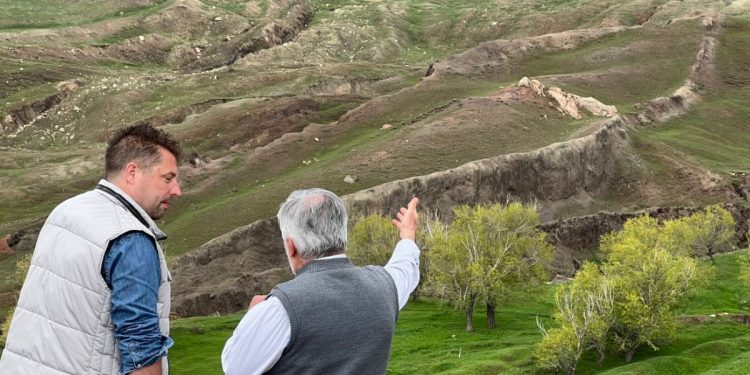Could new analysis of a site associated with the biblical flood shine light on the account from the Book of Genesis?
Analysis of a site near Turkey’s Mount Ararat in the Middle East suggests human activity took place there between 5500 BC and 3500 BC, according to the New York Post.
A team of Turkish and American academics analyzed the site, according to Turkey’s Hürriyet news outlet.
The “Mount Ararat and Noah’s Ark Research Team” began studies in the area in Dec. 2022.
“According to the first findings obtained from the studies, it is thought that there have been human activities in the region since the Chalcolithic period, that is, between the years 5500 and 3000 BC,” Agri Ibrahim Cecen University Vice Rector Prof. Dr. Faruk Kaya said of the site.
“Clayey materials, marine materials and seafood” were identified at the site.
The site in question is about 18 miles south of Mount Ararat.
The location lies near the border between Iran and Turkey.
Scripture identifies Noah’s Ark eventually coming to a rest on the “mountains of Ararat.”
Some assert that a terrain formation in the region, known as Durupinar, is the petrified remnant of the ark’s resting place.
Advocates of the theory point to similar dimensions of the ark described in the Book of Genesis and the formation’s dimensions.
Geologists view Durupinar as a purely natural rock formation in the earth.
It was great having retired professor of geology, Dr. Salih Bayraktutan, out at the Durupinar ark formation site. One of the original Turkish researchers of the site he was full of so much knowledge. Come see us in eastern Turkey: https://t.co/VhuCkMgSyb pic.twitter.com/RxKJ0VXwvC
— Andrew Jones (@arkeologist) May 29, 2022
In the story, God commanded Noah to build a vessel in anticipation of a flood that would wash away civilization as punishment for man’s sinfulness.
The ark-builder was commanded to place a male and female pair of every animal available — so they could repopulate the post-flood world.
Accounts of a world-changing flood in the ancient Middle East are not exclusive to the Bible.
The Epic of Gilgamesh, an ancient Mesopotamian legend, also describes a great flood — and the vessel built by one man to avert its destruction, according to Britannica.
This article appeared originally on The Western Journal.
















 Continue with Google
Continue with Google